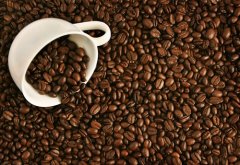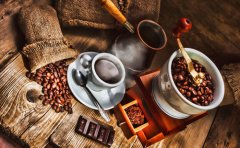Processing and characteristics of Coffee Fruit
Coffee is the fruit of a Rubiaceae plant growing about 6000 feet above sea level, distributed on the world's narrow subtropical axis; coffee trees grow green all the year round and can grow up to 20 feet tall, and are generally controlled at 8 to 10 feet for easy harvest. Coffee trees take 3 to 5 years to bear fruit. They first produce small white flowers that resemble jasmine in shape and size. After withering, they produce dark green coffee fruit, then turn yellow, red, and crimson when fully mature. Coffee beans as we know them are seeds sandwiched in crimson coffee fruit.

Coffee harvesting:
As the coffee fruits are really ripe at different times, they are mainly picked manually, and they are picked from the trees one by one.
Coffee processing:
Coffee fruits need to be processed immediately after picking. There are two processing methods, one is dry: spread on the ground for about 12 to 15 days, direct exposure, after drying, take off the pulp, remove the bean shell. The nuts taken by this method are incomplete and taste poor. when it rains, there will be miscellaneous flavor due to fermentation, but the cost is low. The other is water washing: it takes only 20 to 24 hours to soak the pulp with water, remove the bean shell and dry it to become a clean green bean kernel, clean and free of miscellaneous smell, fresh and mellow taste, short time required, complete beans and less bad beans, but the cost is higher. After the fresh coffee beans are dried, they are still wrapped in a parchment-like shell, and the coffee beans stored in this form are called "Parchment Coffee" (parchment coffee beans). Remove the parchment overcoat from the coffee beans before export, and then polish and grade them before listing.
The variety of coffee
Coffee fruit (coffee beans) is mainly divided into three kinds of original beans: Arabica (Arabica), Robusta (Roberta) and Liberica (Librika). The origin of Arabica coffee is Ethiopia, which accounts for 70% to 80% of the world's coffee production, and almost all the world's famous coffee varieties are Arabica. Roberta coffee originates in Congo, Africa, and accounts for about 20% to 30% of the world's production. But its flavor is bitterer than Arabica, its quality is much lower, and its caffeine content is higher, so it is mostly used to make instant coffee. Liberica coffee, which is produced in Liberia in Africa, accounts for less than 5% of the world's production, and this coffee bean has a very strong aroma and bitter taste.
Important Notice :
前街咖啡 FrontStreet Coffee has moved to new addredd:
FrontStreet Coffee Address: 315,Donghua East Road,GuangZhou
Tel:020 38364473
- Prev

Production and processing of coffee beans
Coffee in the ancient Middle East, like the legend of 1001 nights, like a veiled girl with a thousand faces, can not only help get close to God, but also wash the spring of sadness.
- Next

Processing of coffee beans
1. Peeling removes the peel and most of the flesh by mechanical or manual means. two。 Fermentation removes the mucus and film from the core by fermentation. as the length of fermentation time will affect the flavor of coffee, each manufacturer has its own fermentation time. 3. The drying method is mainly divided into natural sun drying and natural air drying. Excessive water content can easily lead to mildew and insect growth of raw coffee beans.
Related
- Guji coffee producing area of Guji, Ethiopia: Humbela, Shakiso, Wulaga
- What is the most expensive variety of Qiloso in BOP multi-variety group?
- How to store the coffee beans bought home?
- Why are Yemeni coffee beans so rare now?
- Ethiopian Sidamo all Red Fruit Sun Sun Santa Vini Coffee beans
- SOE is mostly sour? What does it mean? Is it a single bean? what's the difference between it and Italian blending?
- Is Italian coffee beans suitable for making hand-brewed coffee?
- How to choose coffee beans when making cold coffee? What kind of coffee beans are suitable for making cold coffee?
- Just entered the pit to make coffee, what kind of coffee beans should be chosen?
- Can only Japan buy real Blue Mountain Coffee? What are authentic Jamaican Blue Mountain coffee beans?

